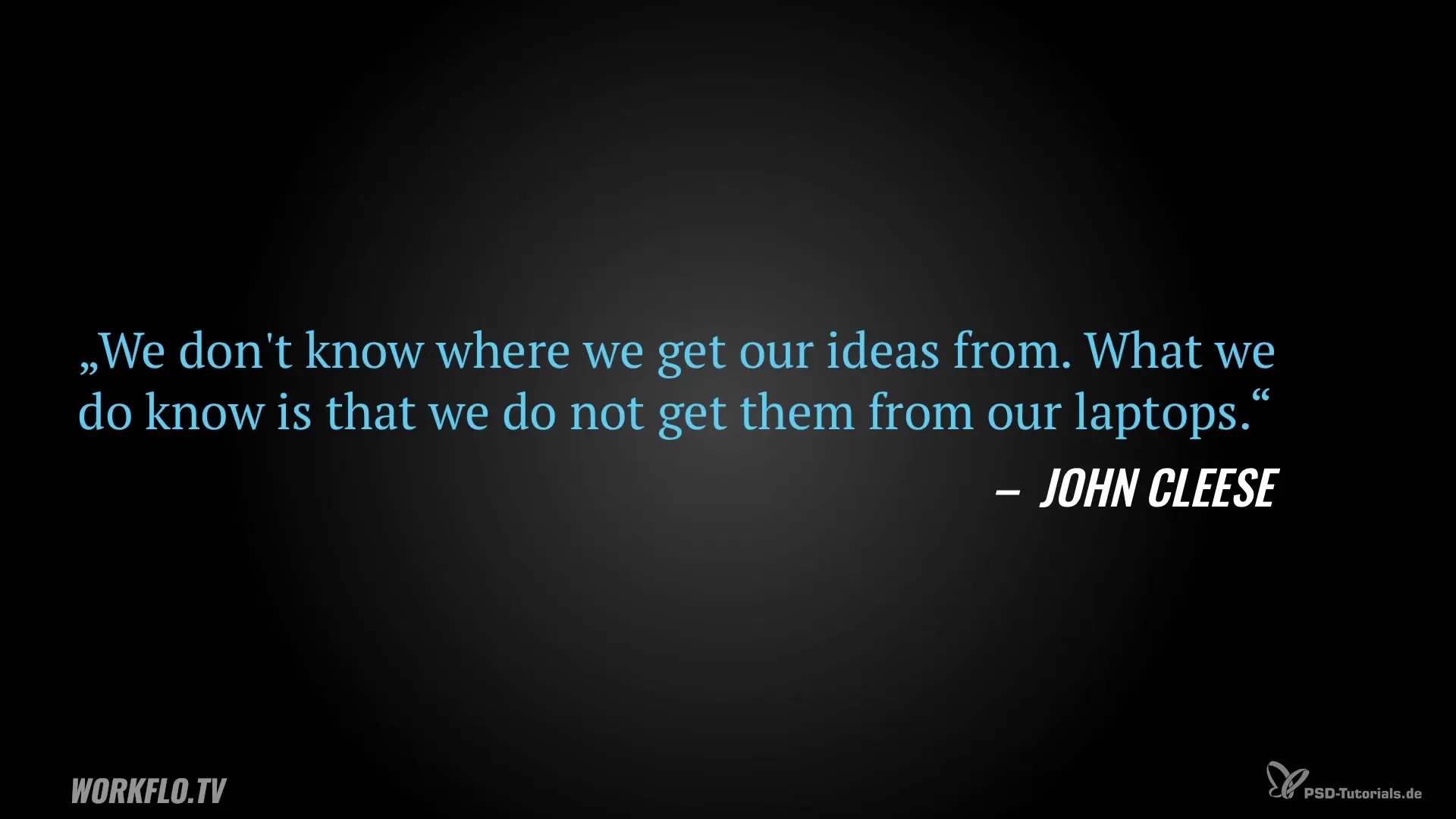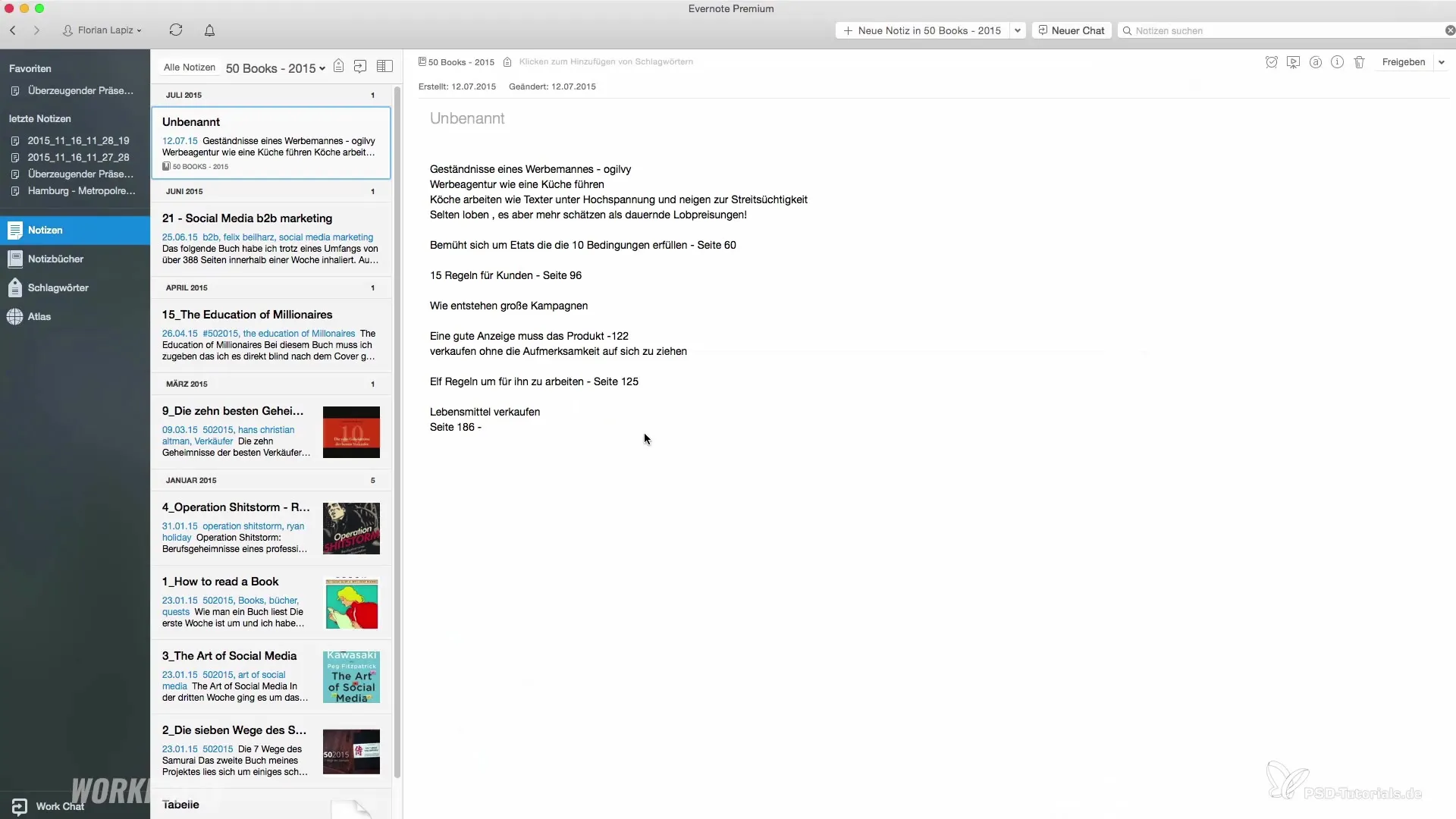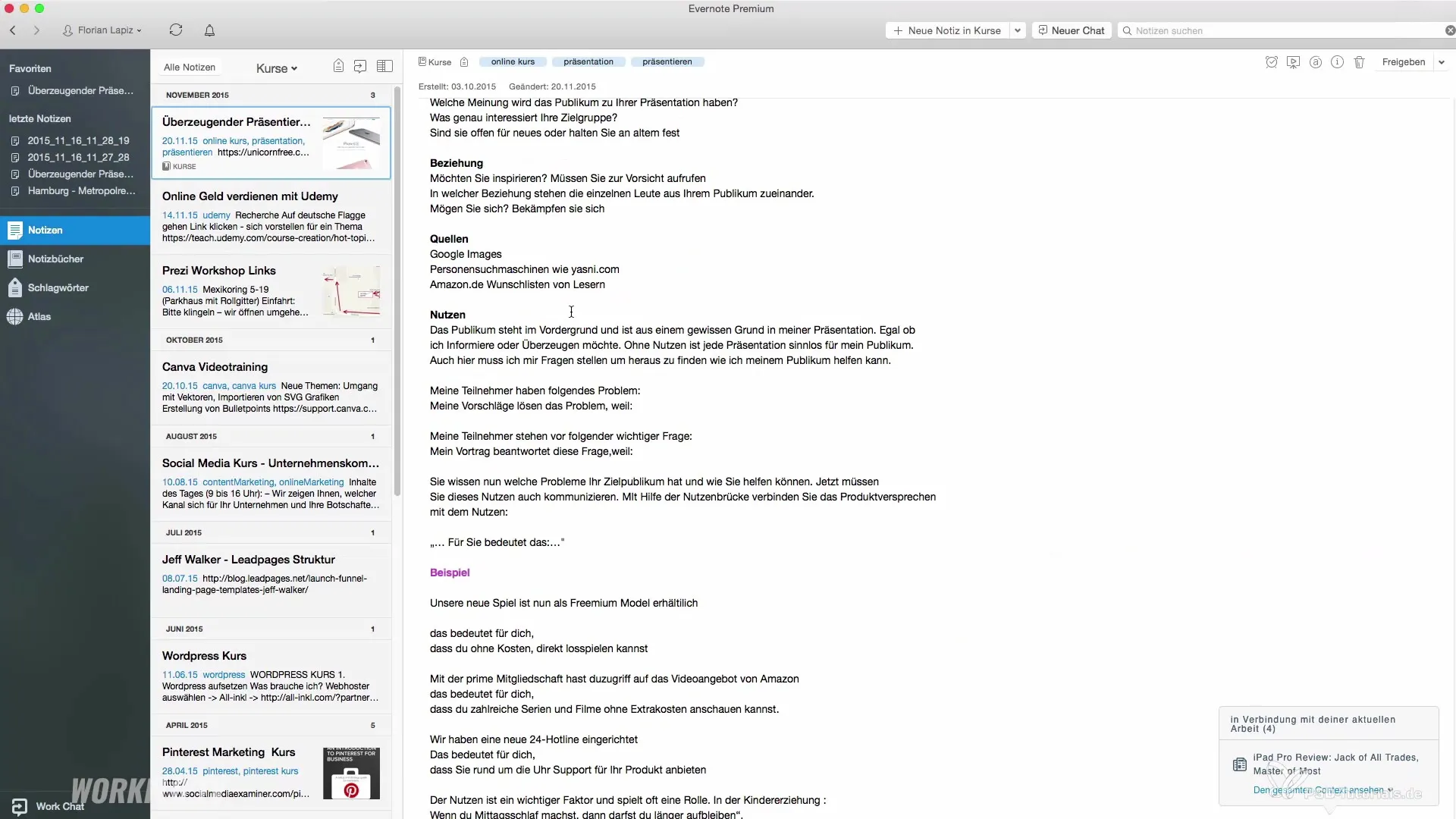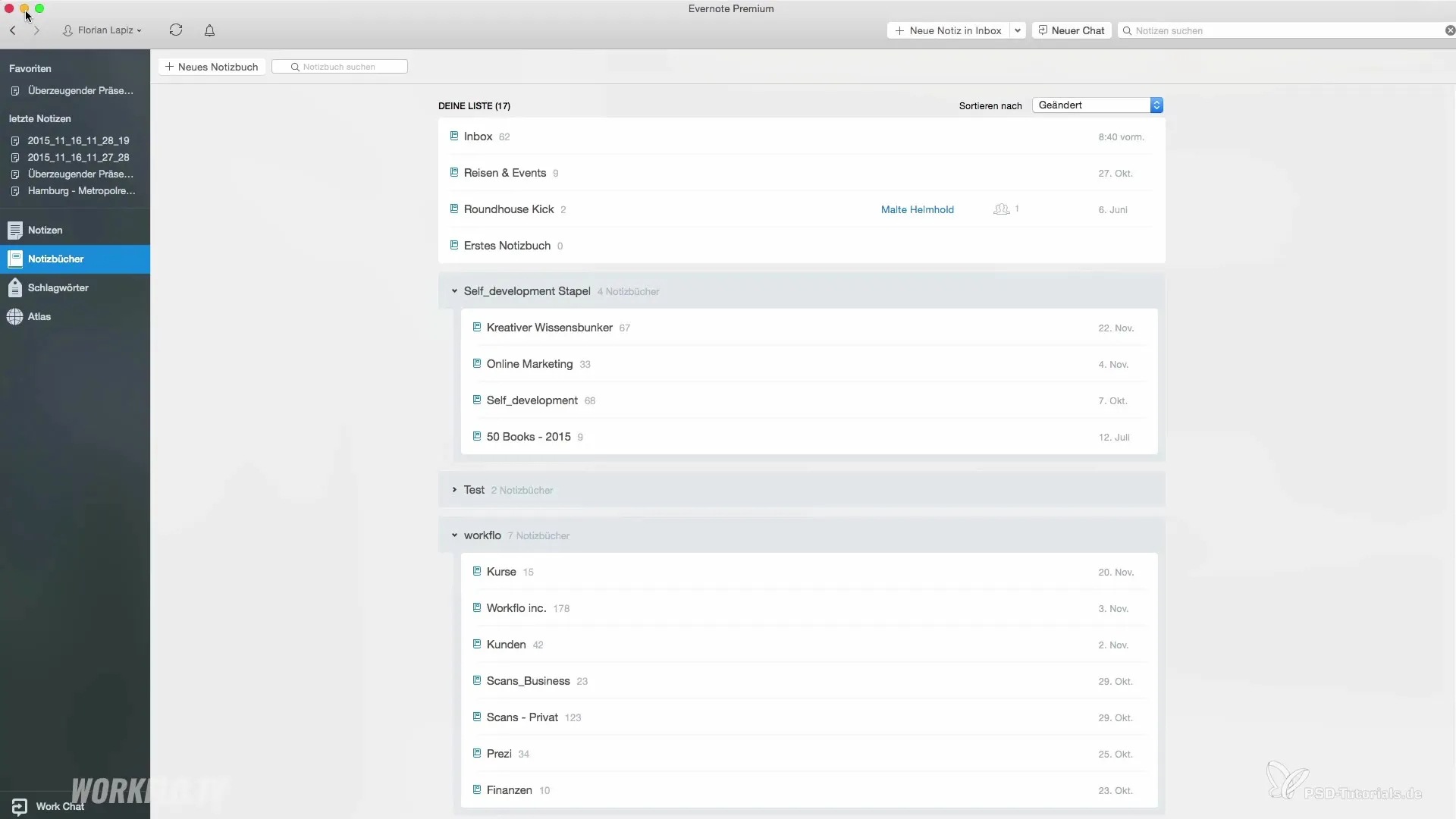The key to a convincing presentation lies in selecting and structuring the right content. Once you have defined your core message and your audience, the next step is crucial: collecting the content. This guide presents various methods that will help you capture your ideas effectively and in a structured way. This way, you can ensure that you are well prepared for your presentation.
Key insights
- Ideas often do not come from nowhere, but need to be actively collected.
- Before digital work, it is worthwhile to resort to analog methods.
- Tools like Evernote can help to keep thoughts structured and accessible at any time.
Step-by-step guide
Step 1: Thoughts instead of technology – start analog
Before you sit down at your computer and try to transfer everything into PowerPoint, take your time to put your thoughts on paper. This can help you let your ideas flow more freely without being distracted by technical aspects. A simple way is to use a large sheet of paper and sketch your thoughts or use a mind map approach.
Step 2: Post-its as creative support
A proven method to visually represent your ideas is the use of Post-its. Write each thought on an individual Post-it. This has the advantage that you can consider each thought in isolation without being distracted by other ideas. Stick the Post-its on a wall or on a large sheet to get a visual overview of all ideas.
Step 3: Use digital tools – use Evernote
Once you have collected your ideas, it is advisable to use digital tools to organize them. Evernote is an excellent tool for this. You can create notebooks for each topic and store your thoughts, PDFs, or images there. This allows for quick searching and easy structuring of your content. It is only important that each thought is concise and categorized accordingly.

Step 4: Categorizing for quick access
Use the opportunity in Evernote to tag everything. By categorizing your content, you can access it much more easily at later points in time. Each time you work on a new topic or have ideas, add them to the corresponding notebooks and tags. This will help you stay clear and structured during your preparation.

Step 5: Capture information in everyday life
To ensure that you don't miss anything, it is helpful to take notes whenever an idea comes to mind. You can install the Evernote app on your smartphone or tablet to gain access to your notes from anywhere. When you are on the go and have an insight, you can capture it immediately. This ensures that you also remember the smaller ideas that you encounter in everyday life.

Step 6: Consolidate and refine everything
After you have collected all your ideas, it is time to review and consolidate them. Go through your notes, clarify uncertainties, and assess which ideas are the most relevant for your presentation. Remove anything that is not essential to your core message, so that only the strongest arguments and content remain.

Summary – Collecting content and using it effectively
In the process of collecting content, there are many valuable strategies, from analog idea generation to the use of digital tools to the structured organization of your thoughts. If you follow these steps, you will be able to structure your content effectively and elevate your presentation to a new level.
Frequently asked questions
How do I find the best ideas for my presentation?Every idea can be inspiring – just write it down immediately, wherever you are.
Which tool is best for collecting content?Evernote is a good choice as it offers many features for organization and simple searching.
How can I stay creative?Experiment with different methods such as Post-its, mind maps, or sketches to gain new perspectives.


